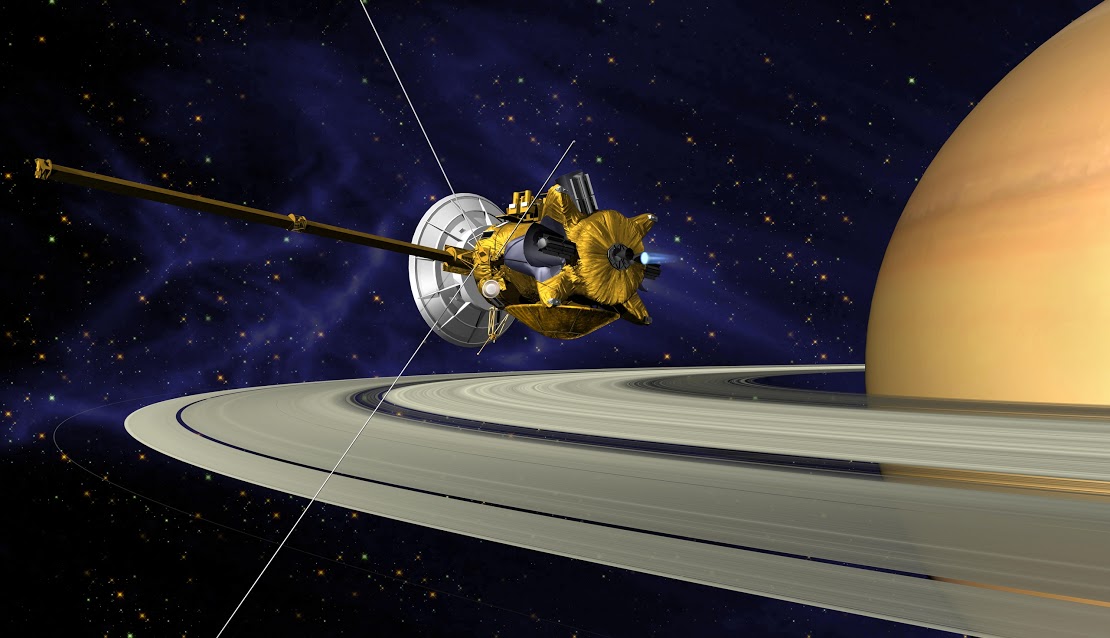Cassini’s End: The Mission to Saturn
After nearly two incredible decades of effort and discovery, the Cassini probe’s mission to Saturn is coming to an end this very morning. First launched on October 15 in 1997, Cassini has been in a stable orbit and transmitting data about the ringed giant for thirteen years and now, its fuel reserves are nearly depleted. However, NASA announced that the Cassini mission will end in one last blaze of glory, the “Grand Finale”. The unmanned probe’s final act will be to plummet into Saturn’s atmosphere, transmitting as much data as it can before the heat and pressure destroy its aircraft aluminum frame and other various components for good.

The Cassini Mission was first conceived in the 1980’s as a joint mission between NASA, the ESA and the ISA. The spacecraft consisted of two parts: the orbital probe (Cassini) and the lander unit (Huygens) which descended upon Saturn’s moon of Titan, the only lunar body with a thick atmosphere in the Solar System. Cassini-Huygens was powered by three radioisotope thermoelectric generators, as the distance from the Sun would make solar panels a bulky, inefficient power source.
.jpg)
The mission’s goal was to uncover as much information about Saturn, its rings and moons as possible. While there is still much we don’t know, Cassini-Huygens provided us with a great deal of information (and broke a few records while it was at it). The spacecraft was the first in history to fly between Saturn’s rings, taking some breathtaking photos and recording a wealth of data about the planet’s magnetosphere, ring formation and the unusual hexagon-shaped polar regions.
The moons of Saturn were also a major highlight of the mission. Huygens’ record-setting landing on Titan gave us our first proper look at the mysterious moon, confirming the presence of lakes and rivers of liquid methane and geological processes similar to Earth. Cassini also documented a massive plume erupting from the moon of Enceladus, leading the mission team to suspect it may possess sub-surface oceans.
Finally, Cassini actually discovered seven new moons during its lifetime and even observed the possible birth of a new moon within Saturn’s rings, giving us a whole new perspective on planetary formation. Needless to say, Cassini-Huygens’ discoveries rewrote the book on the Saturnine system.
.jpg)
Image taken by Cassini!
It might seem a little silly to feel emotional at the thought of some metal and equipment burning up in the sky of another world, but for many, today will be a bittersweet day. Cassini-Huygens gave us remarkable sights, new insights and data and it inspired many get away from the drowning city lights and take in the cosmos as it was meant to be seen. However, all good things must come to an end and as the probe makes its final bow, we hope you’ll take a moment today to stop and appreciate the trials and triumphs of the Cassini Mission.
Thanks for reading and keep looking to the stars!
Watch the Grand Finale Live: http://www.nasa.gov/live